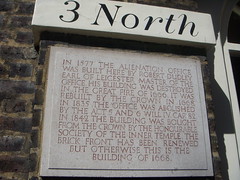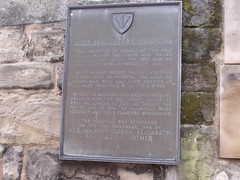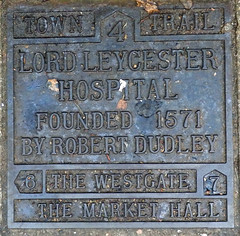Sir Rt Hon. Earl Lord Robert Dudley KG PC


Sir Rt Hon. Earl Lord Robert Dudley KG PC
(1532-1588)
Master of the Alienation Office, Member of Parliament (1549-1552), Member of Parliament (1553), 342nd Knight of the Order of the Garter (from 1559), Privy Counsellor (from 1559), 1st Earl of Leicester (from 1564), and 1st Baron Denbigh (from 1564)
Commemorated on 3 plaques
In 1577 The Alienation Office was built here by Robert Dudley Earl of Leicester Master of the Office. His building was destroyed in the Great Fire of 1666. It was rebuilt by the Crown in 1668. In 1835 the Office was abolished by the Act 5 and 6 Will. IV. Cap. 82. In 1842 the building was bought from the Crown by the Honourable Society of the Inner Temple. The brick front as been renewed but otherwise this is the building of 1668.
3 North Row, Temple EC4, London, United Kingdom where they built
Lord Leycester's Hospital The Guilds of St George, of the Holy Trinity and of the Virgin Mary raised these buildings about the year 1400 A.D. these guilds were dispersed in 1546. In 1571 Robert Dudley, Earl of Leycester founded here his hospital for aged or infirm men who had seen service in the wars together with their wives. By 1950 the buildings had become seriously decayed and the brethrens' quarters were no longer fit for use. During the period 1958 to 1966 the buildings were restored and their quarters modernised. The hospital was re-opened on the 3rd November 1966 by Her Majesty Queen Elizabeth the Queen Mother
Lord Leycester's Hospital, High Street, Warwick, United Kingdom where they founded a hospital for aged or infirm men
Warwick Town Trail #04
Lord Leycester Hospital Founded 1571 by Robert Dudley - < 6 The Westgate - ^ 7 The Market Hall
High Street, Warwick, United Kingdom where they founded



